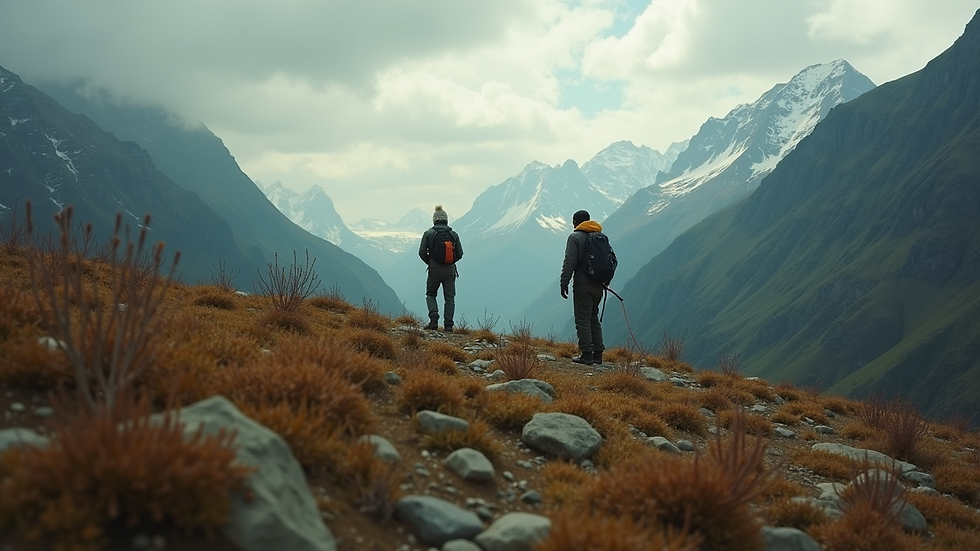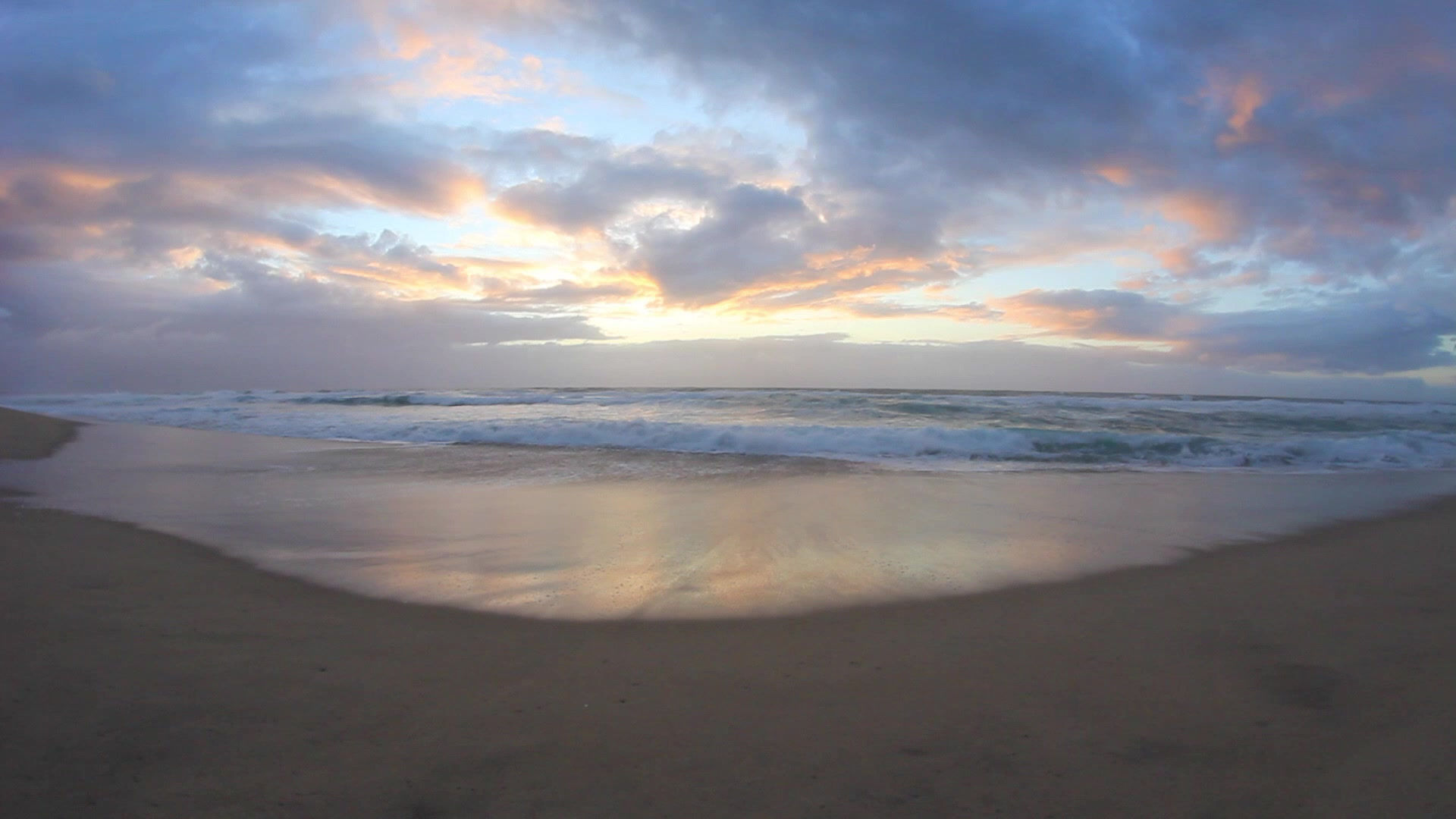Exploring the Art of Adventure Photography
- Fred Sacroug
- Jun 4
- 4 min read
Updated: Jun 5
Every adventure has a story to tell, and capturing those moments through the lens of your camera can bring those tales to life. Whether you're trekking through the mountains, exploring hidden waterfalls, or experiencing bustling city life, your camera can help immortalize the thrill of adventure. In this post, we will delve into the art of adventure photography, giving you tips and techniques to enhance your travel documentation.
Understanding Adventure Photography
Adventure photography is more than just snapping pictures while on vacation. It requires a keen eye, an understanding of composition, and the ability to capture the spirit of the experience. This genre not only showcases beautiful locations but also evokes emotions and tells a story. For instance, a photo of a climber conquering a peak can convey determination and triumph. Similarly, a serene image of a peaceful landscape can reflect tranquility and freedom.
Image of a breathtaking mountain landscape

When you embark on your journeys, consider the elements that make your experiences unique. Think about the stories you want to convey through your photography. This understanding will drive your approach and help you make informed choices regarding your composition, lighting, and the stories behind each shot.
Equipment Essentials for Adventurous Photographers
Choosing the right gear is paramount in adventure photography. While you don't need the most expensive camera, having a reliable one that fits your needs is essential. Here are some basic tools to consider:
Camera: A DSLR or mirrorless camera is ideal for flexibility and quality. Compact cameras or smartphones can work well for those just starting out.
Lenses: A versatile lens can cover a range of shots. For adventure photography, consider a wide-angle lens for landscapes and a telephoto lens for wildlife.
Tripod: A lightweight tripod is useful for stability, especially in low-light conditions.
Extra Batteries/SD Cards: Nothing interrupts an adventure like a dead battery or full memory card. Always carry spares.
Image of photography equipment

By investing in proper equipment, you set yourself up for success. Remember that practice makes perfect, so spend time getting to know your gear, especially before you head out into unknown territories.
Mastering Composition Techniques
Understanding composition is essential for creating stunning photos that capture the essence of your adventures. Here are some composition techniques to elevate your photography:
Rule of Thirds: Imagine your frame divided into nine equal sections. Placing points of interest along these lines or their intersections can create more dynamic shots.
Leading Lines: Utilize natural lines in the environment, such as roads, rivers, or pathways, to guide the viewer’s eye through the image.
Framing: Use natural elements like branches or arches to frame your subject, drawing attention and adding depth.
Perspective Changes: Experiment with different angles such as low or high perspectives to create unique compositions.
Image of a picturesque hiking path

These techniques can transform your photographs from simple snapshots into compelling stories. Practice incorporating these elements into your compositions during your adventures.
Experimenting with Light
Lighting plays a critical role in photography, affecting the mood and tone of your images. Here are some tips for making the most out of natural light:
Golden Hour: The soft, diffused light during the early morning and late evening enhances the subject and minimizes harsh shadows. Plan your shoots during these times when the sun is low on the horizon.
Overcast Days: Cloudy days can provide a softbox effect, reducing glare and shadows. This can be perfect for capturing wildlife or landscapes.
Backlighting: Shoot into the light to create silhouettes. This technique can add drama and interest to your images.
By understanding and manipulating light, you can greatly improve the quality of your adventure photography.
Capturing the Spirit of Adventure
Remember that adventure photography is about more than just beautiful places; it’s about the moments that make those locations special. Here are some tips on capturing the spirit of adventure:
Candid Moments: Shoot candid photos of fellow travelers engaging in activities—whether it's hiking, laughing, or experiencing a local culture. These images breathe life into your storytelling.
Details: Pay attention to the small details, such as a local dish or a unique door. These elements can convey a sense of place and immerse viewers in your experiences.
Interaction with Nature: Capture moments of interaction between people and nature. A photographer capturing a landscape reflects the connection between the subject and the environment.
By focusing on these aspects, the story of your adventure will shine through your photography.
Sharing Your Adventures with the World
After capturing your adventures, sharing them is essential for connecting with others. Here are some ideas on how to showcase your travel photography:
Social Media: Share your best photos on platforms like Instagram, Facebook, or Pinterest. Use relevant hashtags to increase visibility.
Blogging: Start a blog where you document your adventures and share tips. Create a portfolio to showcase your best works, along with stories behind them.
Prints and Exhibitions: Consider printing your best photos and displaying them in local galleries or exhibitions. Physical prints can resonate deeply with viewers.
Photography Contests: Enter contests to gain exposure and feedback. Winning or being featured can enhance your portfolio.
Image of a photo gallery

By engaging with your audience and sharing your experiences, you not only enhance your own skills but also inspire others to embark on their adventures.
Continuous Learning and Improvement
Adventure photography is a journey of continuous learning. Whether you’re a beginner or a seasoned photographer, always seek opportunities to enhance your skills. Attend workshops, enroll in online courses, and connect with fellow photographers to share insights and techniques.
Remember that every photo is a chance to tell a story. The more you practice, the better you’ll become at capturing the essence of your adventures.
In your personal exploration of this art, don’t forget the importance of ethical photography as well. Respect nature, preserve locations, and always consider the cultural context of the places you photograph.
Final Thoughts
Capturing adventures through photography allows you to relive and share personal stories while inspiring others to explore the world. Adventure photography combines technical skills with creativity, enabling you to express the thrill of your journeys. By understanding composition, harnessing light, and focusing on storytelling, you can transform ordinary scenes into extraordinary memories.
Embrace the journey of capturing adventure photography, and let your lens reflect the world’s beauty. Happy shooting!







Comments